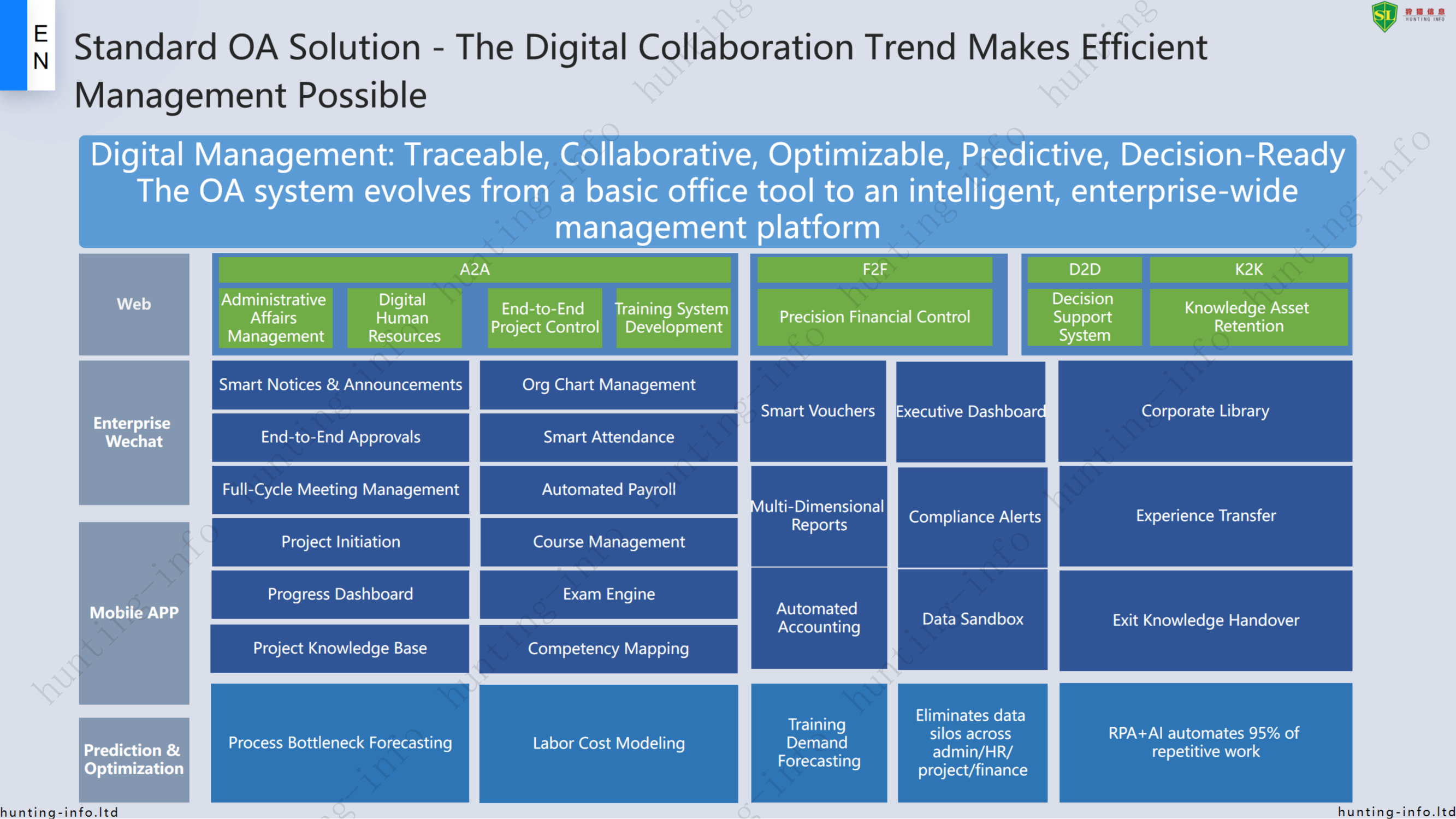Traditional Office Work is at a Turning Point:
Driven by the wave of digital transformation, conventional organizational management is undergoing profound changes. With the surge in demand for remote collaboration, intelligent operations, and paperless workflows, outdated hierarchical structures, paper-based processes, and fragmented teamwork can no longer meet the needs of efficient operations—especially in cross-departmental coordination and workflow management.
These obsolete practices not only hinder productivity but also expose businesses to critical challenges:
1. Cumbersome Approvals & Ambiguous Accountability
- Cross-department collaboration relies on offline communication, leading to duplicated or missed approvals with no standardized conflict resolution.
- Unclear role permissions cause responsibility shifting among teams, delaying project timelines.
2. Severe Data Silos & Lost Institutional Knowledge
- Files scattered across personal devices or local storage result in critical data loss when employees leave.
- Incomplete handover records force new hires to relearn processes, causing collaboration efficiency to plummet.
3. Low Operational Visibility & Uninformed Decision-Making
- No real-time project tracking leaves management blind to bottlenecks.
- Excessive manual intervention breeds compliance risks (e.g., opaque expense claims) and erodes organizational efficiency.
The Core Value of OA Systems
Helps organizations break down collaboration barriers between departments, integrates fragmented processes and data, and enables efficient coordination and intelligent management—ultimately enhancing operational efficiency and decision-making quality. Key benefits include:
Reduced communication costs, accelerated approval processes, improved task completion rates, enhanced knowledge retention, and optimized management transparency.

Pain Points of Traditional Office Models
- Manual workflows: Approvals rely on paper/offline communication, leading to redundant tasks.
- Over-reliance on individual experience: Inconsistent task allocation and follow-up with no standardization.
- Information loss: Files stored haphazardly, causing critical data gaps during personnel changes.
- Inefficient management: Decisions based on intuition rather than data, resulting in process inefficiencies.
Advantages of Intelligent OA Systems
- Automated workflows: Smart approval routing reduces manual intervention, boosting efficiency by 50%+.
- Standardized collaboration: Automated task assignment, reminders, and tracking to eliminate delays and oversights.
- Centralized knowledge management: Unified document storage with full traceability, enabling faster onboarding.
- Data-driven decision-making: Real-time dashboards identify bottlenecks for precise management adjustments.
Standard OA Solution – The Digital Collaboration Trend Makes Efficient Management Possible
Digital Management: Traceable, Collaborative, Optimizable, Predictive, Decision-Ready
The OA system evolves from a basic office tool to an intelligent, enterprise-wide management platform, covering five core modules: Administration, Human Resources, Project Management, Training, and Finance. The solution includes the following 8 key functions:

1. A2A – Administrative Affairs Management
(1) Smart Notices & Announcements: Real-time multi-platform sync with read status tracking
(2) End-to-End Approvals: E-signature/Mobile approval/Intelligent reminders
(3) Full-Cycle Meeting Management: Scheduling → Notification → Minutes → Execution
2. H2H – Digital Human Resources
(1) Org Chart Management: Visual role-based permission configuration
(2) Smart Attendance: Multi-mode clock-in/Anomaly auto-alerts
(3) Automated Payroll: Tax calculation/Encrypted payslip distribution
3. P2P – End-to-End Project Control
(1) Project Initiation: Online application/Multi-level approval/Resource pre-allocation
(2) Progress Dashboard: Gantt charts/Milestone alerts/Blockage tracking
(3) Project Knowledge Base: Version-controlled docs/Cross-team sharing
4. T2T – Training System Development
(1) Course Management: Live & recorded sessions/Credit system/Effectiveness evaluation
(2) Exam Engine: AI-generated tests/Anti-cheating/Auto-grading
(3) Competency Mapping: Training data linked to role proficiency models
5. F2F – Precision Financial Control
(1) Smart Vouchers: OCR recognition/Automatic journal entry
(2) Multi-Dimensional Reports: Cost center/Project/Department drill-down analysis
(3) Automated Accounting: Reconciliation/Period-end closing/Consolidated statements
6. D2D – Decision Support System
(1) Executive Dashboard: Process efficiency/Resource utilization/Cost breakdown visualization
(2) Compliance Alerts: Real-time flags for budget overruns/Contract expirations/Approval delays
(3) Data Sandbox: Custom analysis models/Scenario simulation
7. K2K – Knowledge Asset Retention
(1) Corporate Library: Tiered permissions/Watermarking/Smart search
(2) Experience Transfer: Process templates/Best practice cases
(3) Exit Knowledge Handover: Digital task transition checklists
8. Prediction & Optimization
(1) Process Bottleneck Forecasting: Approval duration/Rejection rate analysis
(2) Labor Cost Modeling: Headcount optimization/Compensation structure simulation
(3) Training Demand Forecasting: Skill gap/Course popularity analytics